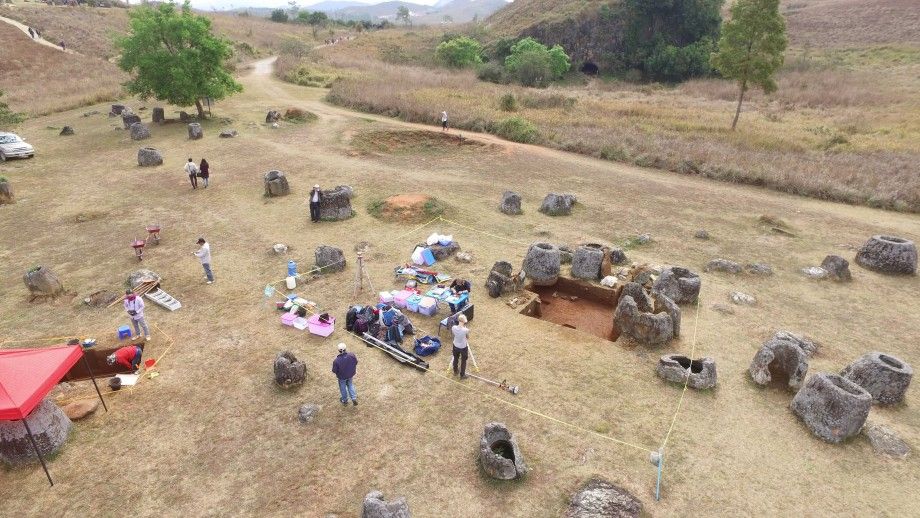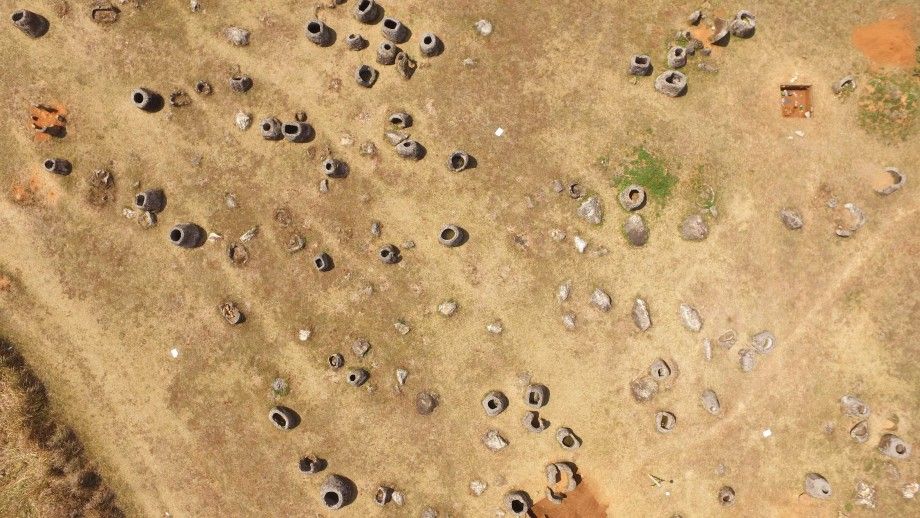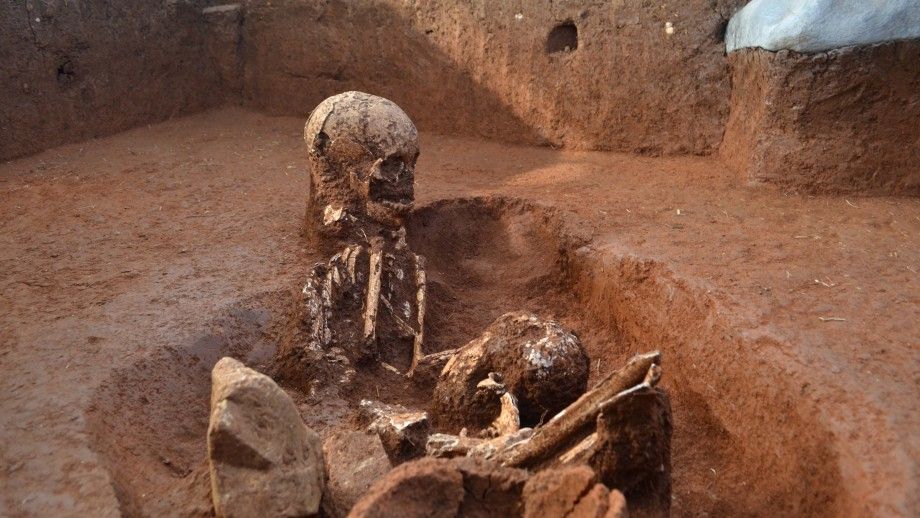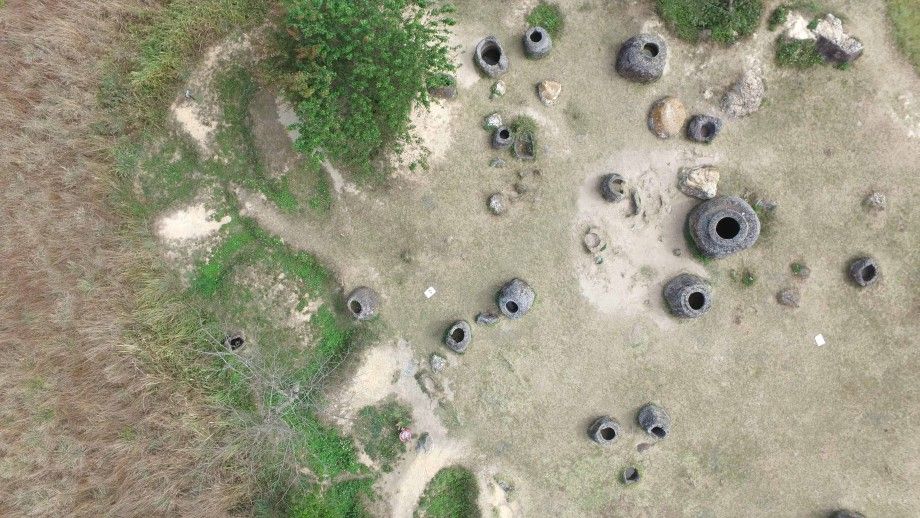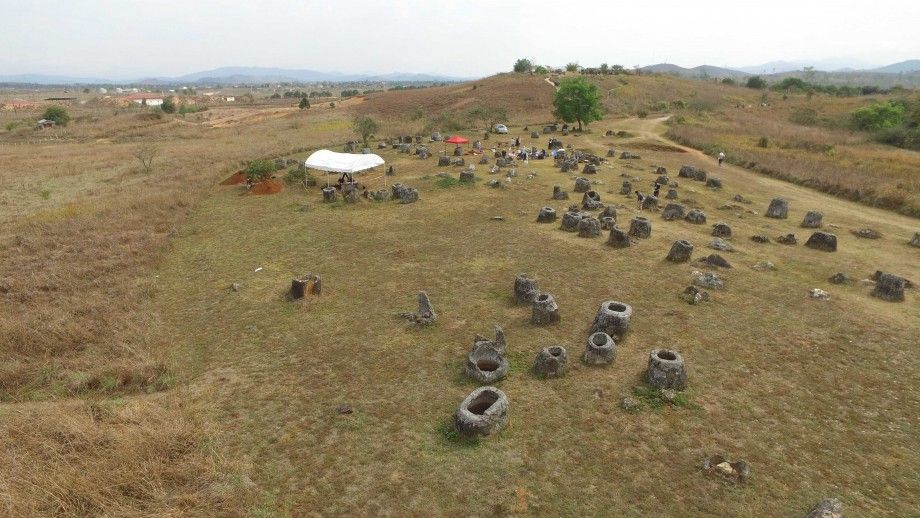Researchers Crack Open the Mysterious Plain of Jars
After 80 years, archeologists get the chance to explore the Laotian plateau dotted with giant stone jars
Giant stone vessels dot the landscape at the Plain of Jars in Laos. They're clustered in 90 groups composed of as few as one to more than 400 jars. It’s the type of area that archeologists dream of excavating. But there have been few digs in the Plain of Jars since the 1930s. A new five-year project between the government of Laos and Australian researchers, however, kicked off last month, and it is already producing new clues to the origin and purpose of the giant urns.
The Plain was off limits during the last half of the 20th century because the Ho Chi Minh Trail, the main supply route for North Vietnam during the Vietnam War, ran through Xiangkhouang Province in north central Laos where the Plain of Jars sits. The US dumped tens of millions of cluster bombs in the area, creating craters, destroying some jars, and leaving lots of unexploded ordnance, which made any archeological dig in the area extremely dangerous. But over the last decade, international projects have cleared the bombs from several sections of the Plain.
Even in the short time researchers have resumed excavations they have made important discoveries, including sets of human remains estimated to be 2,500 years old. It adds credence to the hypothesis put forth by researchers in the 1930s that the jars were a type of crematory where bodies were left to decompose before the bones were removed and buried in surrounding ground. The new discoveries seem to back up most of that idea.
“The skeletons uncovered in this new work attest to the cemetery function, but the mystery still remains as to the function of the stone jars, the heaviest of which is carved from one single piece of sandstone which the British geologist Jeremy Baldock has estimated at around 32 tonnes,” Lia Genovese, a Plain of Jars researcher at Thammasat University in Thailand not involved in the study tell the Christian Science Monitor. She points out that before the new excavations researchers had recovered two skulls, four long bones, and 10 bone fragments. “The importance of this new work cannot be underestimated. It is the beginning of a new era that will shed light on the Plain of Jars.”
Team leader Dougald O'Reilly of the Australian National University School of Archaeology and Anthropology says that the team is finding various types of burials. "There are pits full of bones with a large limestone block placed over them and other burials where bones have been placed in ceramic vessels,” he says in a press release. “Our excavations have also revealed, for the first time at one of these sites, a primary burial, where a body was placed in a grave.”
O’Reilly told the BBC that, although the work has just begun, firmly establishing the purpose of the jars is a big first step. “I don't think there is any doubt now that these jars were related to mortuary ritual,” he says “There is no evidence for habitation around the jars.”
The bodies weren’t buried with sacred objects or artifacts, so it’s difficult to figure out the status of the individuals buried near the jars or where they came from, but further excavations and genetic analysis of the remains over the next several years will finally help shed light on the Plain of Jars culture.
